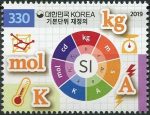(Explore the history and landscape of the United States with us as we approach the 250th anniversary of the American Revolution and American Independence. Get out your homeschool atlas and almanac and follow along!)
Wisconsin is our homeschool state-of-the-week, so why not spend a few minutes today with your students learning about one of Wisconsin’s most important historic places: the Ice Age National Scientific Reserve, a multi-site park that preserves and documents the geological history of the Great Lakes region.
![[Homeschool American Heritage]](https://upload.wikimedia.org/wikipedia/commons/thumb/0/01/Two_Creeks_Buried_Forest.jpg/1024px-Two_Creeks_Buried_Forest.jpg)
The Ice Age National Scientific Reserve is a series of properties managed cooperatively by the state of Wisconsin and the National Park Service, many of them connected by the Park Service’s Ice Age National Scenic Trail:
The Ice Age Trail began with the idea of an Ice Age Glacier National Forest Park to be established along the entire length of the moraines marking the edge of the last glacier in Wisconsin. This original concept eventually led to the creation of the nine unit Ice Age National Scientific Reserve through Federal legislation in 1964 and 1970. The reserve units, administered by the Wisconsin Department of Natural Resources, were created to protect, preserve, and interpret the outstanding examples of glaciation in Wisconsin.
Though work on the trail itself was begun by volunteers in the 1950’s, it was not designated a National Scenic Trail until 1980. Today, the Ice Age Trail links together six of the nine units of the reserve. The nine units are: Two Creeks Buried Forest, Kettle Moraine, Campbellsport Drumlins, Horicon Marsh, Cross Plains, Devil’s Lake, Mill Bluff, Chippewa Moraine, and Interstate State Park. (nps.gov)
You can find a wealth of additional information about the Reserve’s history, landscape, location(s), and visitor facilities on the webpage for Ice Age National Scenic Trail from the National Park Service, and also on the Reserve’s page on Wikipedia.
![[Homeschool American Heritage]](https://upload.wikimedia.org/wikipedia/commons/thumb/8/8a/HoriconMarshBoardwalk.jpg/1024px-HoriconMarshBoardwalk.jpg)
Explore America’s National Parks, National Historical Parks, National Historic Sites, National Monuments, and more via Wikipedia and via the U.S. National Park Service’s website today.
What historical American treasures will you and your students be exploring in your homeschool this Leo Term? 🇺🇸
❡ The great globe itself: This is one of our regular Homeschool Geography posts featuring important natural and historical sites in the United States. Print your own copy of our River Houses American Heritage Calendar and follow along with us, and add your name to our weekly mailing list to get great homeschool teaching ideas delivered right to your mailbox all through the year. 🌎
❡ We set to-day a votive stone: If you want a great long-term history and geography project for your homeschool, explore the Historical Marker Database online (hmdb.org) and make a plan to find all the markers that are listed in your local area. Add any new ones you know of that are missing, and add new photos or descriptions for the ones already included. Your students will gain a better appreciation for your local community and will learn a wealth of new information about history and geography. 🏛
❡ Print this little lesson: Down at the bottom of this post you’ll find a special “Print” button that will let you create a neat and easy-to-read copy of this little lesson, and it will even let you edit and delete sections you don’t want or need (such as individual images or footnotes). Give it a try today! 🖨
❡ Books in the running brooks: You can always turn to your River Houses atlas and almanac for more information about any of our homeschool states-of-the-week. The almanac has detailed profiles of all the U.S. states and territories, and the endpapers of the atlas are indexes that will show you where all of the individual national and regional maps may be found. 📚
❡ Homeschool calendars: We have a whole collection of free, printable, educational homeschool calendars and planners available on our main River Houses calendar page. They will help you create a light and easy structure for your homeschool year. Give them a try today! 🗓
❡ Support our work: If you enjoy our educational materials, please support us by starting your regular Amazon shopping from our very own homeschool teaching supplies page. When you click through from our page, any purchase you make earns us a small commission at no extra cost to you. Thank you for helping us to keep going and growing! 🛒
❡ Join us! The aim of the River Houses project is to create a network of friendly local homeschool support groups — local chapters that we call “Houses.” Our first at-large chapter, Headwaters House, is now forming and is open to homeschoolers everywhere. Find out how to become one of our founding members on the Headwaters House membership page. 🏡




